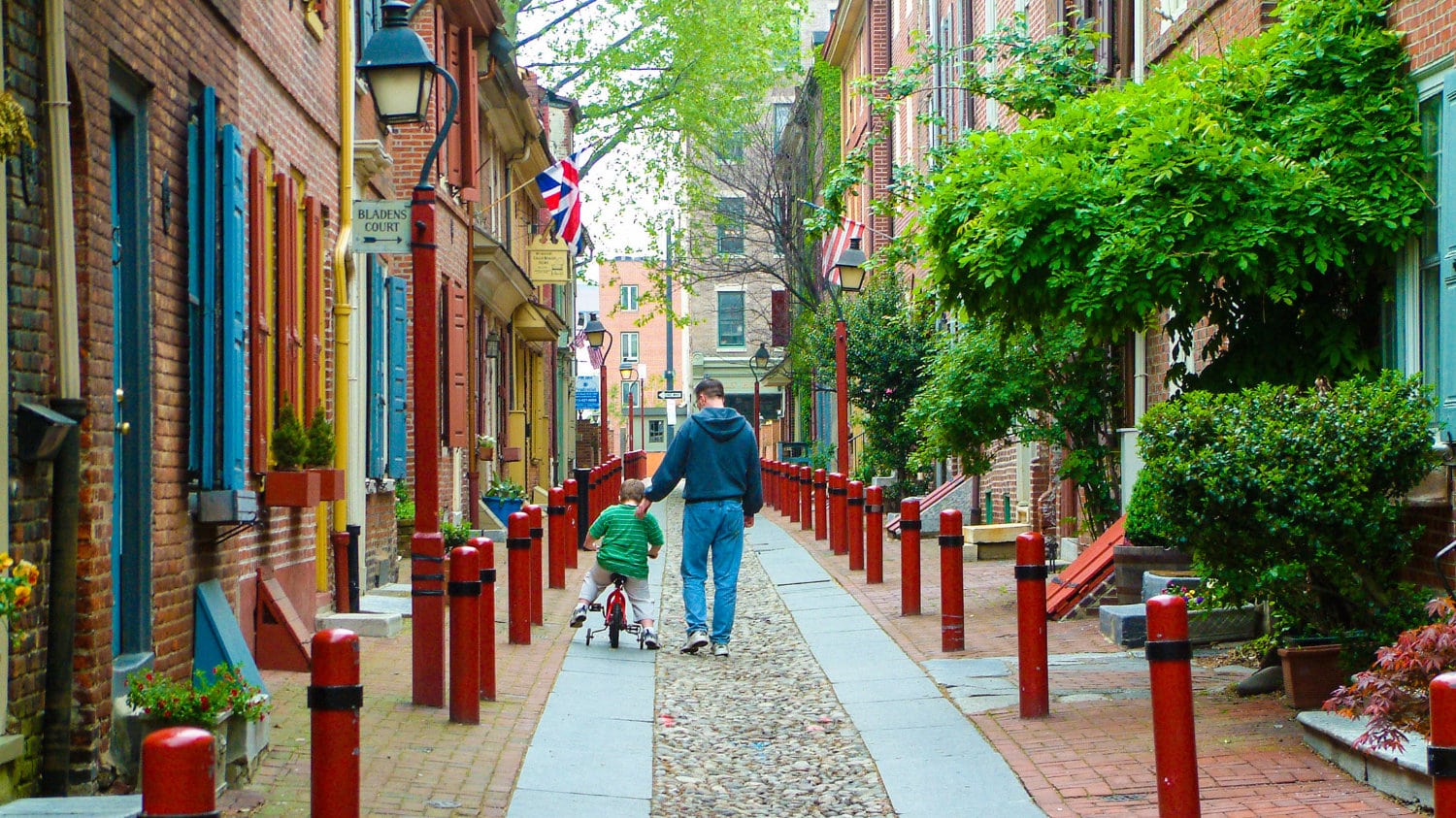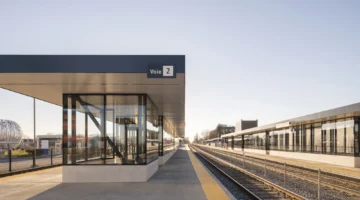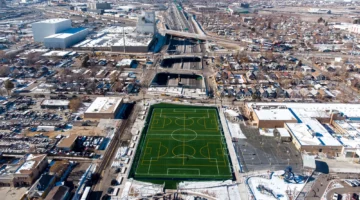"Alleys were a neglected and unused element of the American built environment for at least a half century, until they made a comeback through the New Urbanism in the 1980s. Traditional neighborhoods developments (TNDs) included alleys for trash collection, utilities, and the primary purpose—to move garage doors off streets.
The use of alleys in TNDs allowed for more compact and human-focused frontages on streets—part of the restoration of a walkable public realm. That move has been successful—as far as it goes—and yet urbanists may be missing a significant opportunity to transform urban places. An architect and urban designer, Thomas Dougherty, makes that case in a recent e-book, The American Alley: A Hidden Resource.
Not all traditional US cities and towns have service alleys, but many of them do. Cities with loads of alleys include Denver, St. Louis, Detroit, Chicago, Indianapolis, Memphis, Nashville, Seattle, Sacramento, Phoenix, Kansas City, Long Beach, Birmingham, San Antonio, Milwaukee, Minneapolis, Savannah, Washington DC, and many other places small and large. “In Chicago alone, there are 1,900 miles of alleys,” notes Dougherty, citing a statistic that highlights the momentous number of alleys in the US.
A virtual trip on Google to any of these cities shows just how underutilized many alleys are. They are frequently overgrown, with few buildings—often used for storage or abandoned. Streets in many of these cities are also underutilized, but the degree of alley disuse is on another level entirely.
Introducing ADUs
Meanwhile, another overlooked piece of American cities, accessory dwelling units (ADUs), has come back into style recently. New urbanists have been promoting ADUs for decades, but recent state and city legislation has kicked their resurgence into high gear. That trend is most evident in California, where a 2016 state law made ADUs legal on single family lots. The law dramatically increased the construction of this dwelling type, and ADUs now make up 40 percent of housing building permits in Los Angeles, and 38 percent in San Jose, according to the Terner Center at UC Berkeley.
ADUs offer more affordable housing that can be built incrementally behind houses, where alleys are often located. Dougherty puts two and two together and says “the revival of ADUs and alleys can play an important role in addressing a host of issues in our communities today.”
That said, ADUs are not currently being designed to improve alleys as places, Dougherty says, but “will arguably degrade the alley in ways that prompted zoning codes to ban them a century ago.” [...]"
New urban opportunity: Alleys, mews, and accessory units
The unsung alley has the potential to create an intimate American urbanism, it just needs a little attention from urban designers




